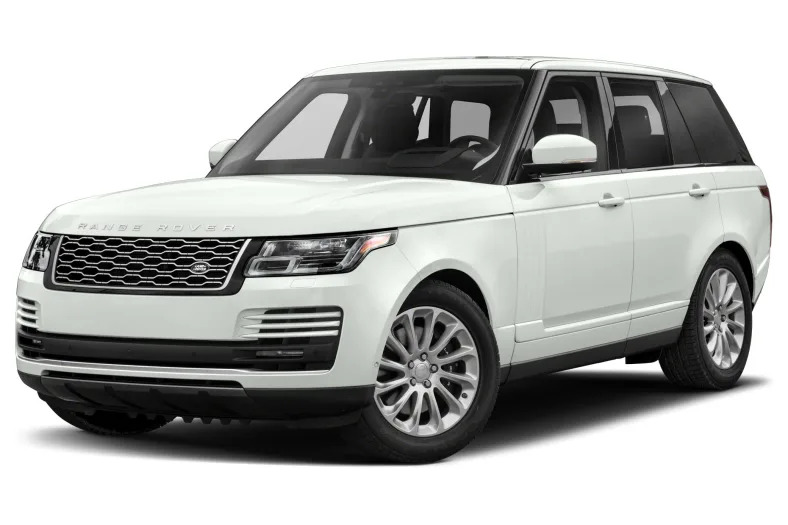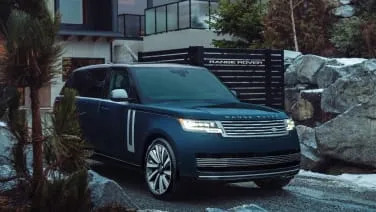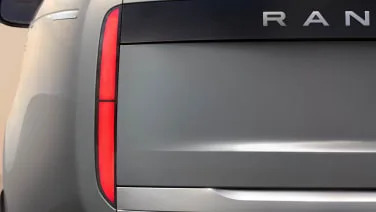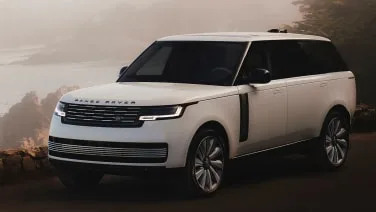3.0L V6 Supercharged HSE 4dr 4x4
2019 Land Rover Range Rover
The plug-in hybrid version of the 2020 Range Rover provides the answer to the little voice in the back of your head. The one that speaks up after you've indulged in the sumptuousness of the RR's leather-lined interior, marveled at its buttery smooth ride and gazed across the broad clamshell hood from your lofty perch that's as much an observation deck to the world below as it is a cabin. This is a vehicle you can truly, deeply desire. And then that voice pipes up: "It gets 19 mpg at best and is that really what the world needs right now, Mr. Fancy Man?" No, it most certainly does not. "OK, so how does 32 mpg sound instead?" That's what I could reply after driving the Range Rover P400e plug-in hybrid for 75 miles of mixed city, mountain and rural highway driving after charging its battery overnight. Like other plug-in hybrids, that number could be much higher should you keep closer to its estimated 31 miles of electric range (official EPA estimates are expected to be a bit lower). One day I drove 41.1 miles and observed 43.7 mpg. On the other hand, if you go on an extended drive beyond that electric range, it seems reasonable to expect something in the mid-20-mpg range (EPA-estimated fuel economy also hasn't been released). Now, can such fuel economy be considered truly green? No way. Does the multitude of extra resources devoted to producing a Range Rover compared to a Kia Niro PHEV, for instance, chip away some of whatever extra greenness you get with the plug-in hybrid version? Probably. Yet, here's a dose of reality: If you've got $108,945 to spend, you're probably not in the market for a Niro. If you're going to buy a Range Rover anyway, why not get the plug-in hybrid one that gets 32 mpg instead of the 19-mpg supercharged V6 or 18-mpg supercharged V8? "Gobs and gobs of delicious power," you might answer. True, the hybrid is slower to 60 mph (6.4 seconds) than the supercharged V8 (5.1 seconds), but it's quicker than the base supercharged V6's 7.1 second run. And perhaps there's a stigma attached to the knowledge you're driving a Range Rover with a four-cylinder engine, but that should be tempered by the total system output: 398 horsepower and 472 pound-feet of torque. Electric power is also quite in keeping with the Range Rover norm of torque-rich, effortless and quiet acceleration. The Range Rover full-stop isn't some high-powered barking beast like a Range Rover Sport SVR. It's about grand, stately civility. Silently wafting along without an engine running only adds to that. When the grid-sourced electricity is exhausted or max power is needed, that 2.0-liter turbocharged four-cylinder does come to life and sounds nothing like a blown V8. It's different, but not objectionable — certainly no more so than the optional diesel engine. That, by the way, goes from zero to 60 mph in 7.5 seconds and returns an EPA-estimated 24 mpg combined (2018 …
Full Review
The plug-in hybrid version of the 2020 Range Rover provides the answer to the little voice in the back of your head. The one that speaks up after you've indulged in the sumptuousness of the RR's leather-lined interior, marveled at its buttery smooth ride and gazed across the broad clamshell hood from your lofty perch that's as much an observation deck to the world below as it is a cabin. This is a vehicle you can truly, deeply desire. And then that voice pipes up: "It gets 19 mpg at best and is that really what the world needs right now, Mr. Fancy Man?" No, it most certainly does not. "OK, so how does 32 mpg sound instead?" That's what I could reply after driving the Range Rover P400e plug-in hybrid for 75 miles of mixed city, mountain and rural highway driving after charging its battery overnight. Like other plug-in hybrids, that number could be much higher should you keep closer to its estimated 31 miles of electric range (official EPA estimates are expected to be a bit lower). One day I drove 41.1 miles and observed 43.7 mpg. On the other hand, if you go on an extended drive beyond that electric range, it seems reasonable to expect something in the mid-20-mpg range (EPA-estimated fuel economy also hasn't been released). Now, can such fuel economy be considered truly green? No way. Does the multitude of extra resources devoted to producing a Range Rover compared to a Kia Niro PHEV, for instance, chip away some of whatever extra greenness you get with the plug-in hybrid version? Probably. Yet, here's a dose of reality: If you've got $108,945 to spend, you're probably not in the market for a Niro. If you're going to buy a Range Rover anyway, why not get the plug-in hybrid one that gets 32 mpg instead of the 19-mpg supercharged V6 or 18-mpg supercharged V8? "Gobs and gobs of delicious power," you might answer. True, the hybrid is slower to 60 mph (6.4 seconds) than the supercharged V8 (5.1 seconds), but it's quicker than the base supercharged V6's 7.1 second run. And perhaps there's a stigma attached to the knowledge you're driving a Range Rover with a four-cylinder engine, but that should be tempered by the total system output: 398 horsepower and 472 pound-feet of torque. Electric power is also quite in keeping with the Range Rover norm of torque-rich, effortless and quiet acceleration. The Range Rover full-stop isn't some high-powered barking beast like a Range Rover Sport SVR. It's about grand, stately civility. Silently wafting along without an engine running only adds to that. When the grid-sourced electricity is exhausted or max power is needed, that 2.0-liter turbocharged four-cylinder does come to life and sounds nothing like a blown V8. It's different, but not objectionable — certainly no more so than the optional diesel engine. That, by the way, goes from zero to 60 mph in 7.5 seconds and returns an EPA-estimated 24 mpg combined (2018 …
Hide Full Review
Hide Full Review
Retail Price
$94,950
MSRP / Window Sticker Price
| Engine | 3.0L V-6 |
| MPG | 17 City / 23 Hwy |
| Seating | 5 Passengers |
| Transmission | 8-spd w/OD |
| Power | 380 @ 6500 rpm |
| Drivetrain | Terrain Response four-wheel |
Smart Buy Program is powered by 





